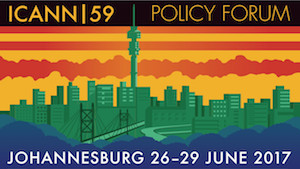GAC session on 2-character country codes as second level domains
29 Jun 2017 02:00h
Event report
Mr Olof Nordling (Senior Director, GAC Relations, ICANN) opened the session by explaining that it would discuss the status and the next steps for exchanges between the Governmental Advisory Committee (GAC) and ICANN, regarding the topic of 2-character codes as second level domains.
He then invited Mr Thomas Schneider (ICANN GAC Chair,) to kick-start the discussions. In his presentation, Schneider stated that the GAC advice issued since 2014 had played an instrumental role in shaping the process developed by ICANN for processing requests from new gTLD registry operators for the release of 2-character labels at the second level. He noted that during ICANN58 in Copenhagen, Denmark, a series of concerns had been raised by some governments regarding the release of 2-character codes.
Iran noted that further clarifications are needed regarding some of the terms used in the ICANN Board resolutions dealing with the issue of 2-character codes. With regard to the initiative of the ICANN President and CEO to create a task force to address the concerns raised by governments, Iran asked for more details regarding the terms of reference of the task force, its composition, and its relation with both the ICANN CEO and the GAC.
Argentina commented that there as been a lack of clear information and proper communication among the different parties concerned by the issue of using 2-character codes at the second level. It stated that it was important to convene a small group of interested parties to review the issue and to come up with better methodologies that would make it easier to understand the underlying issues.
India delved into the discussion by asserting its decision to oppose the use of 2-character codes at the second level. It feels that the delegation of .IN at the second level would culminate in consumer confusion. India also expressed its dissatisfaction with the proposed mitigation measures, terming them inadequate, and suggested the setting up of a working group where the terms of reference could be debated by all GAC members.
On its part, Brazil decried the lack of timely inclusion of GAC members in the decision-making process on the issue of the 2-character code. It called for inclusion in the decision-making process, stating that it was key to building trust.
France asked why the ICANN Board had decided to unilaterally do away with the previous procedures that guided the release of the corresponding country codes at the second level, without consulting GAC. Additionally, it asked about the purpose and deliverables of the taskforce, as well as how the newly proposed ex post mechanism works.
In his response, Mr Cyrus Namazi (ICANN Global Domains Division) pointed out that the provisions had been adopted to mitigate confusion with a corresponding country code, which was fully part of the contract between the registry and ICANN. Namazi added that if a country perceived a mis-characterisation or abuse of their country code at the second level and they were unable to resolve it, they were free to lodge a case with ICANN Compliance for appropriate action.
China suggested the adoption of a mechanism where relevant GAC members could give the green light to the use of 2-character code at the second level prior to its implementation.
Russia echoed France’s sentiments, stating that the previous procedures regarding the 2-character code at the second level had been working appropriately. Russia was critical of the ICANN Board’s decision to amend the procedures without consulting GAC members. It also faulted the proposed mitigation measures by the ICANN Board, stating that they were not adequate in resolving issues regarding the 2-character code at the second level.
The European Commission noted that is would be useful for the task force to have a limited number of members, who would work on the details and report back to the GAC. It suggested that the task force could start by focusing on the results of the survey conducted among GAC members regarding the use of 2-character codes at the second level.
The USA and the UK asserted that they were not part of countries that had a problem with 2-character code at the second level. Their concern, however, was with the procedure, which contravened the ethos of the multistakeholder model.
Kenya expressed its strong opposition on the use of the 2-character code at the second level without the engagement of relevant governments. It deliberated that the use of the 2-character code would place an increased burden on states in terms of monitoring its potential use.
Norway and Germany wrapped up the discussion by supporting the setting up a taskforce to resolve the issues in question.
Related topics
Related event

